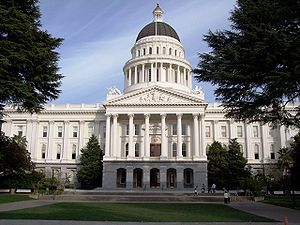 Image via WikipediaWhile working on the Kaleidoscope Project (assisting faculty at eight colleges develop courses that implement open education resources or open textbooks), I have run into interesting instructional design challenges with creating assignments using materials that were written a hundred years ago. Typically, instructors will take assignments out of a teacher's edition of a textbook or from supplemental material. When they do that, they often trust that the publisher is aware of the learning outcomes of the course or subject. This is not always a safe assumption to make. We are not limited to using older public domain texts, but there are instructors using them. If one wanted to create an course using openly licensed materials, there are modern textbooks, essays and openly licensed journals that can all serve those purposes. If one wanted to use nothing except materials written in the past four or five years, it could easily be done. Such projects are becoming more and more common. Ironically, there are English textbooks out there that are still using excerpts from Toffler's Future Shock (1972) when discussing technology, so the openly licensed textbooks have opportunities to make vast improvements.
Image via WikipediaWhile working on the Kaleidoscope Project (assisting faculty at eight colleges develop courses that implement open education resources or open textbooks), I have run into interesting instructional design challenges with creating assignments using materials that were written a hundred years ago. Typically, instructors will take assignments out of a teacher's edition of a textbook or from supplemental material. When they do that, they often trust that the publisher is aware of the learning outcomes of the course or subject. This is not always a safe assumption to make. We are not limited to using older public domain texts, but there are instructors using them. If one wanted to create an course using openly licensed materials, there are modern textbooks, essays and openly licensed journals that can all serve those purposes. If one wanted to use nothing except materials written in the past four or five years, it could easily be done. Such projects are becoming more and more common. Ironically, there are English textbooks out there that are still using excerpts from Toffler's Future Shock (1972) when discussing technology, so the openly licensed textbooks have opportunities to make vast improvements.But there are cases where instructors want to take advantage of the vast wealth of public domain texts. This seems like a non-issue in most areas of the humanities where we still traffic in Plato, but the question comes up; how do we make it relevant? How do we make it new? The funny thing about that is that students have to do that all the time. They do this whether we want them to or not! One of the ways that we understand a piece of writing or new knowledge, is by applying our previous personal experience, what is happening in the world around us at the time, and combine it with what we have learned before. From this constructivist approach, the teacher's assignment is to give the student
 opportunities to apply personal experience and previous knowledge to new information. We can add to that by facilitating the connections the students can make to one another and subject matter experts via twitter and other social networks. But given a public domain text, let's say an essay by psychologist Otto Rank, a teacher could ask the students, based on their personal experience, if Rank's description of interpersonal relationships is valid. What recent news stories seem to support or refute his theory? If the students are reading works by other writers, they can be asked how the theory differs from that author. If they are using a discussion forum (and they should be) then the students have the opportunity to share their experiences and benefit from the experiences and readings of others. They should also be encouraged to follow experts in the field on blogs and twitter and to participate in broader discussions outside of class. In other words, we make sense out of the world through our interactions, and these may be interior or exterior. We are connection-making animals. Learning does not come from a text by itself no more than a textbook is a class.
opportunities to apply personal experience and previous knowledge to new information. We can add to that by facilitating the connections the students can make to one another and subject matter experts via twitter and other social networks. But given a public domain text, let's say an essay by psychologist Otto Rank, a teacher could ask the students, based on their personal experience, if Rank's description of interpersonal relationships is valid. What recent news stories seem to support or refute his theory? If the students are reading works by other writers, they can be asked how the theory differs from that author. If they are using a discussion forum (and they should be) then the students have the opportunity to share their experiences and benefit from the experiences and readings of others. They should also be encouraged to follow experts in the field on blogs and twitter and to participate in broader discussions outside of class. In other words, we make sense out of the world through our interactions, and these may be interior or exterior. We are connection-making animals. Learning does not come from a text by itself no more than a textbook is a class.What techniques do you use in your classes to help your students connect to the broader issues? Feel free to email me or use the comment link below.












